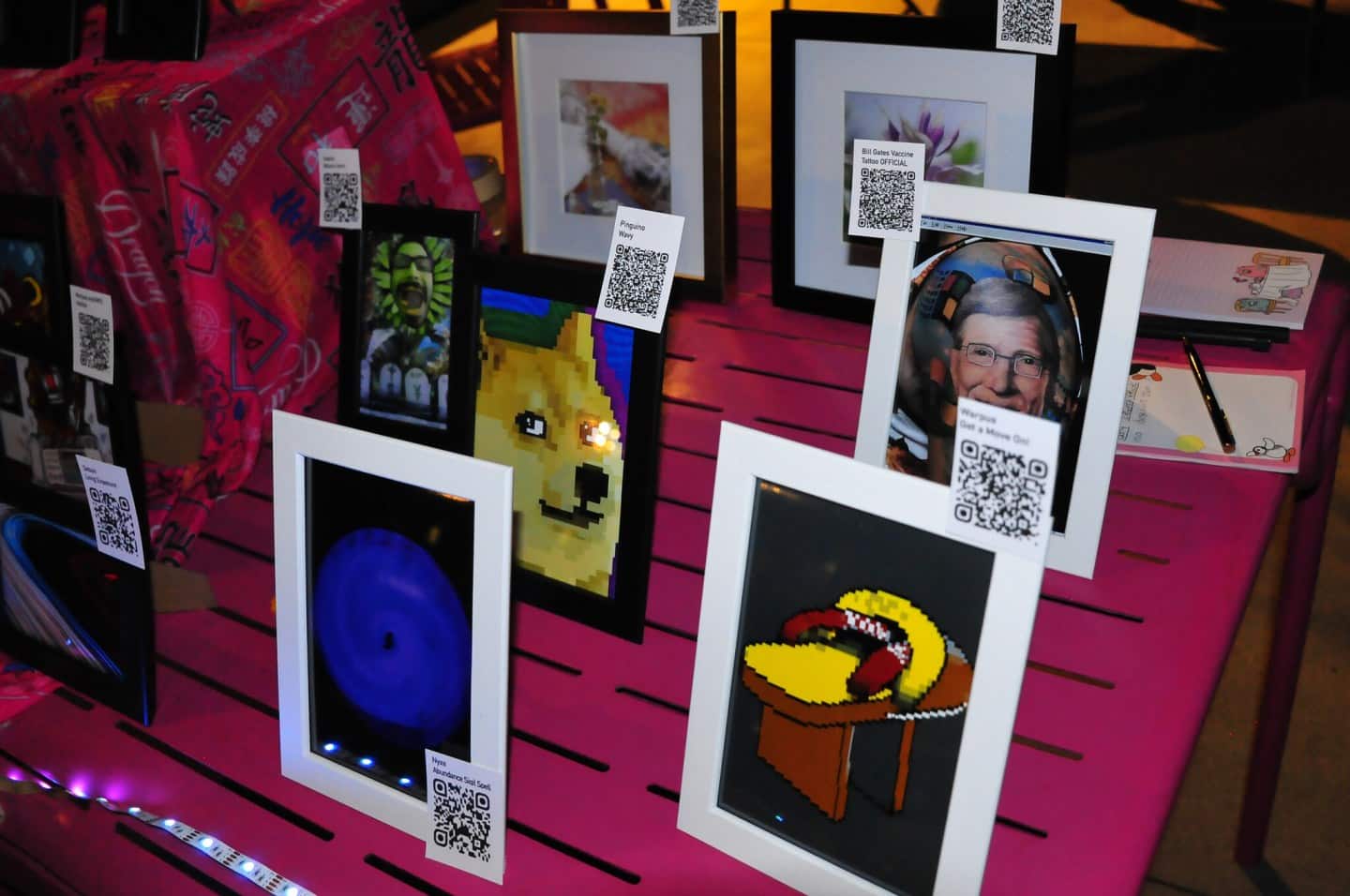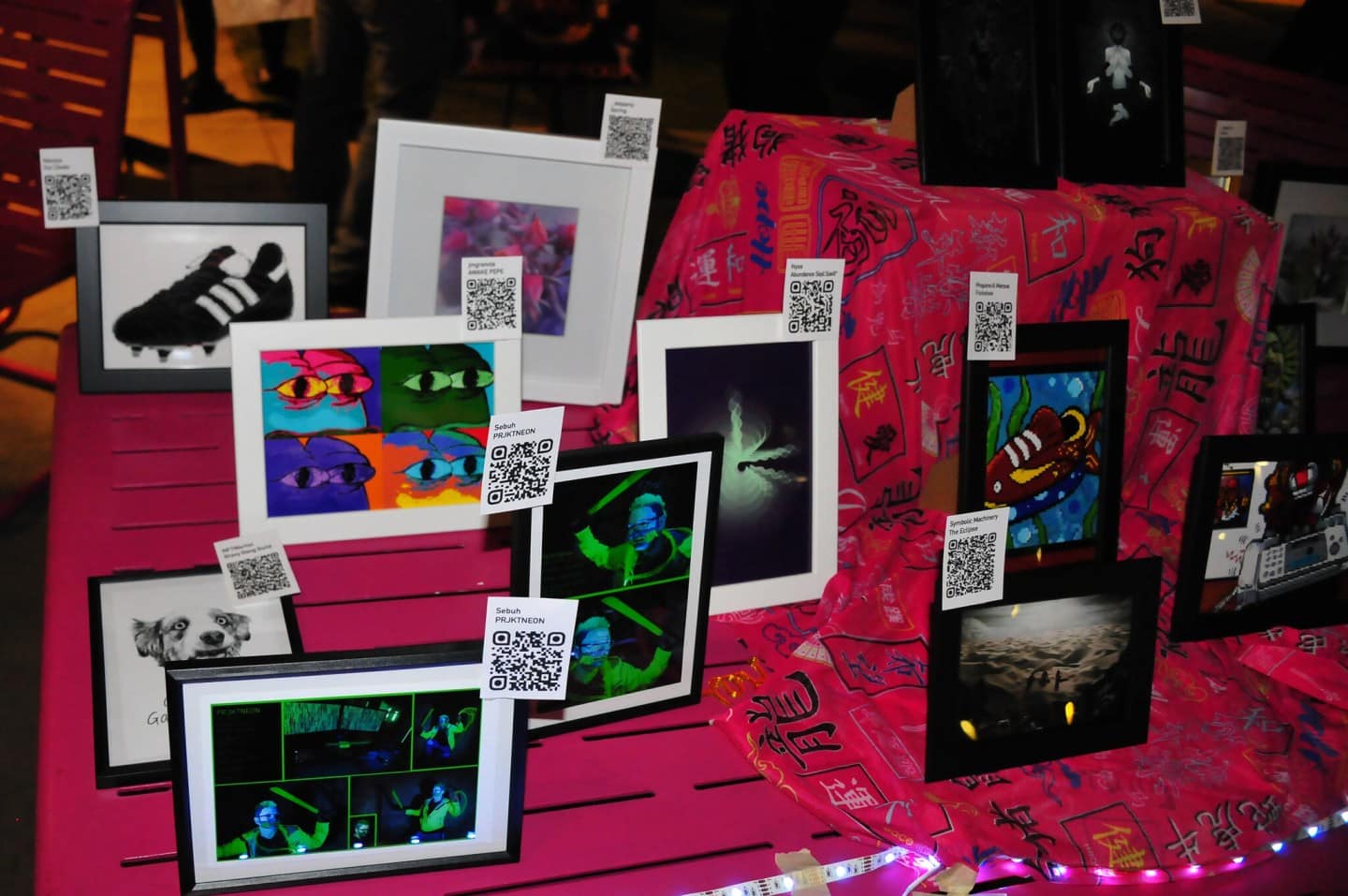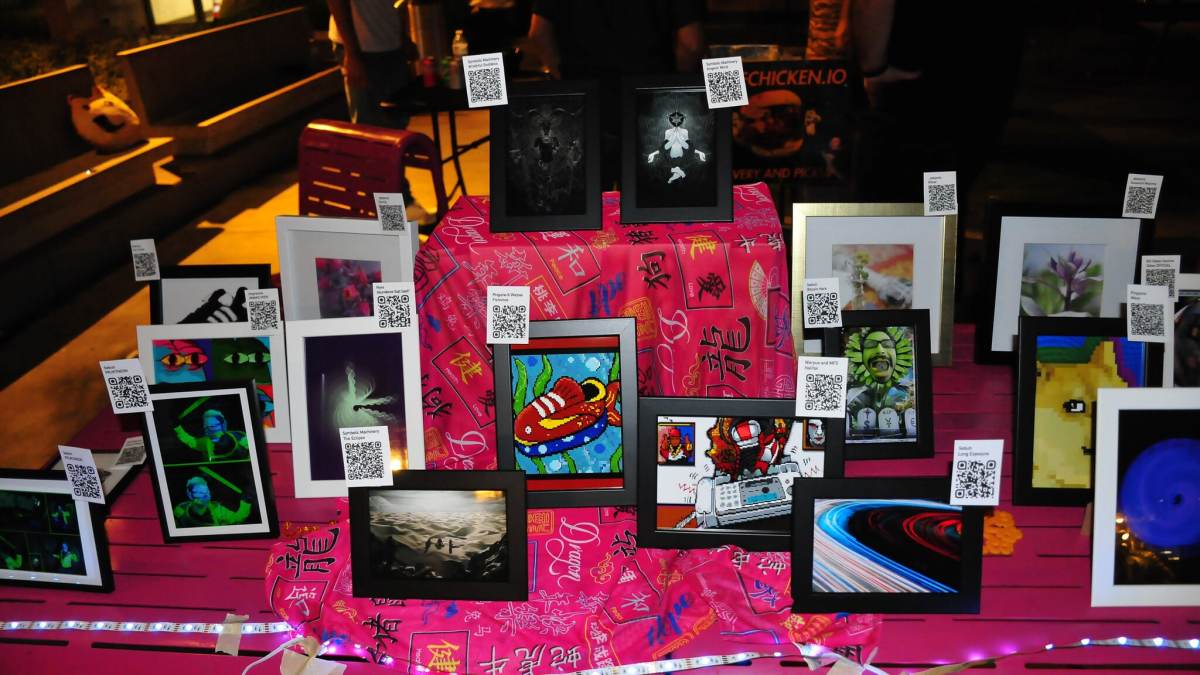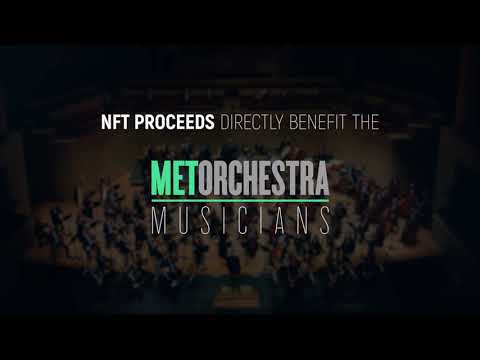On March 31, 2020, the Metropolitan Opera suspended paychecks for the musicians of its orchestra as its productions ground to a pandemic-induced halt. Some performers left New York City, refinanced their mortgages, or took early retirement. Others survived on a combination of Zoom lessons and unemployment.
By the end of 2020, concert venues had reopened in Texas, and the Dallas Symphony Orchestra invited 50 members of the Met Orchestra to their state for a joint rendition of Mahler’s Symphony No. 1. Two months after the televised concert, the Dallas Symphony Orchestra began marketing the video recording and other associated content as NFTs (non-fungible tokens). The proceeds from these tokens were intended for the cash-strapped New York musicians.
A non-fungible token is an encrypted certificate which identifies the owner of a digital object. You’re not buying the painting, but effectively paying to have your name placed on the little sign next to it. Many of the works associated with NFTs are hardly exclusive; a famous example is the first ever tweet, by Twitter founder Jack Dorsey, which sold for $2.9 million. In fact, the accessibility and reproducibility of these digital objects are part of the appeal. The more people who see them, the more potentially come into contact with the NFT holder’s name. NFTs are often linked with “smart contracts,” which regulate additional agreements such as division of streaming proceeds.
Generally, the purchaser has no rights to the files associated with the artwork itself, though they often receive exclusive tidbits. This means that although every NFT is unique, having an NFT does not make you the only person who can look at the painting or listen to the piece of music you bought. The authenticity of the ownership token is guaranteed on the blockchain, a network of decentralized computers which produce ever-expanding databases. NFTs share this technology with cryptocurrencies such as Bitcoin. Their communities have in common a deep distrust of centralized institutions, be they regulatory or curatorial, and an apocalyptic bent.
Besides sea shanties, NFTs were probably the most hyped internet trend of 2021. Advocates proclaimed that nothing less than “an artistic revolution” was underway, enabled by the technology. In the summer, news channels reported millions being spent on digital artworks. By the end of the year, every major worldwide institution, from the New York Yankees to Unicef, seemed to have hopped aboard the glittering train.
Even classical music. The New Zealand composer Matthew Thomas Soong is offering each movement of his “24 Winter Preludes” as an NFT, with new tracks released each new full moon. (He doesn’t appear to have sold any so far.) American composer Cristina Spinei has released an orchestral work titled “Prelude” as an NFT as well, with total purchases capped at 20. Each buyer receives the score, parts, and audio and video recordings of the work. So far, Spinei has sold one NFT, for nearly $5,000. (Because the performers were paid in NFT shares instead of session fees, their income from the project seems to have been minimal.*) Composer Mason Bates is also preparing a NFT for his opera, “The (Re)volution of Steve Jobs,” for sale on the platform ArtOfficial. And the Dallas Symphony Orchestra has sold 24 of its 41 NFTs, though it’s not clear exactly how much profit it has made from them.
More aesthetically interesting is “Betty’s Notebook,” a “programmable piece” by the vocal ensemble Verdigris based on the short-wave radio signals supposedly picked up by a teenager after the disappearance of Amelia Earhart. The work consists of “stems” of tape material which can be purchased in 48 different versions; an investor also bought an NFT of the master track. The artistic director of the ensemble, Sam Brukham, said, “The buyer didn’t have any experience in or knowledge of classical music, but he saw the value in it. Musicians used to depend on how many people bought an album, but now we can sell single works and reproductions, like visual artists.” So far, “Betty’s Notebook” has brought in over $375,000.

By internet standards, NFTs are old news. The first tokens were produced in 2012, when some current crypto-millionaires were probably still slinging Pokémon cards at recess. In 2017, the successful NFT projects CryptoPunks and CryptoKitties launched. The next year, the prestigious Center for Art and Media in Karlsruhe, Germany, dedicated an exhibition to NFTs. It was followed by the State Hermitage Museum in Moscow and a forthcoming NFT Museum in Seattle. By 2019, the total worth of NFTs in circulation ran upwards of $210 million.
Another explosion of interest in NFTs came last year, when the digital artist Beeple auctioned the NFT for his collage “Everydays: the First 5000 Days” at Christie’s. The amalgamation of cartoons which ArtNet critic Ben Davis described as “BroBible-level brain farts” (including a whiff of racism and misogyny), sold for a nice $69 million. It is now the third most expensive work by a living artist of all time.
Of course, this shows that the NFTs are not quite as free from institutional hands as their advocates might hope. As with the cryptocurrency market, many people buy NFTs just so they can flip them later—which is why stuffy auctioneers like Christie’s and Sotheby’s have adapted so easily to this market. The crypto world is full of scammers, and despite the technological barriers, NFTs are sometimes stolen.
The most successful NFT projects, like Bored Ape Yacht Club, create algorithmically generated, collectable images for buyers to display as profile pictures. (When all your apes are gone, no one can hear you scream.) And voilà: The search for a digital transposition of material status symbols is complete. Where an Insta shot of a sports car or the email signature “Sent from my iPhone” have a tacky concreteness to them, a JPG of a cartoon monkey apparently displays a more ethereal wealth and a value system that embraces the cutting edge and the decentralized.
The NFT business is even more dependent on the cruel rules of the attention economy than the traditional art market. When an early draft of Mozart’s “Marriage of Figaro” fails to sell at auction, the consequences are limited. But NFTs are like soap bubbles: You need to blow new ones faster than the old ones burst. Ownership is speculative—the earning potential is in the selling and reselling. That explains the cultish mannerisms of true crypto believers: without constant growth the market threatens to implode. Because previous owners are often cut in on potential future deals, NFTs can resemble a typical pyramid scheme. Those who get in early or have lots to invest earn their profit from the people who join the market later. Of course, it takes some honest-to-god stories of rapid rises or obscene profits to keep the flame alive, especially among the Elon Musk fanboys predisposed to such narratives. But the NFT market is essentially a game of hot potato: Ditch it before the music stops, or you’re stuck with some lines of code and a hefty financial loss.
Before embracing NFTs wholeheartedly, classical music would do well to understand the crypto scene’s hostility toward institutions. Musical institutions, at least in Europe, rely heavily on state subsidies, which the NFT world’s libertarian leanings demonize. Furthermore, the NFT aesthetic could hardly be more removed from the perfectionist tendencies of professional classical music—say what you like about detail fetishism, at least most orchestras put more work into their Bruckner than the Bored Apes, where a change of goofy hat and sunglasses is enough to count as a unique piece. This lazy charm, of course, is the point. There’s a reason why so much reporting about NFT art—including this piece—focuses on its monetary implications, rather than the actual art associated with it.
There are other consequences, too. The most important market for NFTs runs on the Ethereum blockchain, which also hosts the cryptocurrency Ether. The network uses a “proof-of-work” algorithm, whereby individual computers guarantee the validity of the newly-minted tokens through massive computing power. (Users are paid for their energy contributions.) This computing power expended by the decentralized network has a climate impact which is hard to overstate. The carbon footprint of a single average NFT is estimated at 465 pounds, which translates to a round-trip flight from the VAN headquarters in Berlin to Warsaw, Poland. Artist Joanie Lemercier used as much energy with one NFT sale as his studio normally expends in two years. Every additional sale, auction, and change of ownership raises this value significantly. As a whole, the blockchain Ethereum consumes more electricity per year than the Philippines or Belgium. A single Ether transaction is also equivalent to the electricity consumption of a German in two months. (Ethereum announced a plan to make its blockchain 98 percent more climate-friendly this year, but that’s already looking unlikely to happen.)
Alternative blockchains and currencies like Cardano and Solana are comparatively climate-friendly and offer their own NFT marketplaces. Neither have the reach of Ethereum, however (although earlier today, Bank of America endorsed Solana). Artists who have embraced tokens and are now using Ethereum have the chance to positively impact their carbon footprints by switching to an alternative marketplace. Behold the revolutionary power of NFTs!

The NFT hype of the last year is an illustration of the sad state of affairs facing musicians, developments which the pandemic has only sped up. Album sales are an expense rather than a source of income, streaming services pay artists fractions of a cent while allowing consumers to listen guilt-free. Thanks to Omicron, concerts, the last reliable anchor of the musicians’ income, won’t be on solid footing anytime soon. With all this in mind, it’s not surprising that artists have pounced on a promising-sounding system. A new desire for immaterial possessions, and a willingness to spend good money on them, may even be a positive trend if it leads to more fertile connections between artists and audiences. The question is whether NFTs are really the right medium to encourage these connections.
The latest from VAN, delivered straight to your inbox
The project “Betty’s Notes” is a positive example of the potential of NFTs. Not because it has sold well, but because it uses the concept of the tokens as a constitutive element of the piece (a similar example of such programmable music is the “Mozart Beats” project). The medium is less-well suited to the simple sale of recordings. Crypto prophets market NFTs with what they claim are original selling strategies: tickets coupled with album sales, blockchain-based crowdfunding or private sponsorships. But, minus the technology, none of these are new ideas, and it’s not clear how moving them to the blockchain adds to their appeal. It’s something NFTs have in common with many other supposedly futuristic projects—take Musk’s Loop, which boils down to a kind of inefficient subway where you’re allowed to sit in your car, or Beethoven X. In the arts, NFTs are no more than transpositions of established models of funding and patronage to a new technology. This is no artistic revolution. At most it’s an art market revolution. And even that is questionable, because the most distasteful aspects of that market—artificial valuation, auctioneering, speculation, even money laundering—are rather encouraged by NFTs. It’s business as usual, repackaged in a new technology and an unsettling ideology. ¶
*Correction, 1/19/2022: The musicians who participated in Spinei’s project were paid union scale fees for their work. The income from NFT sales take the place of royalty payments.
Subscribers keep VAN running!
VAN is proud to be an independent classical music magazine thanks to our subscribers. For just over 10 cents a day, you can enjoy unlimited access to over 875 articles in our archives—and get new ones delivered straight to your inbox each week.
Not ready to commit to a full year?
You can test-drive VAN for one month for the price of a coffee.




Comments are closed.